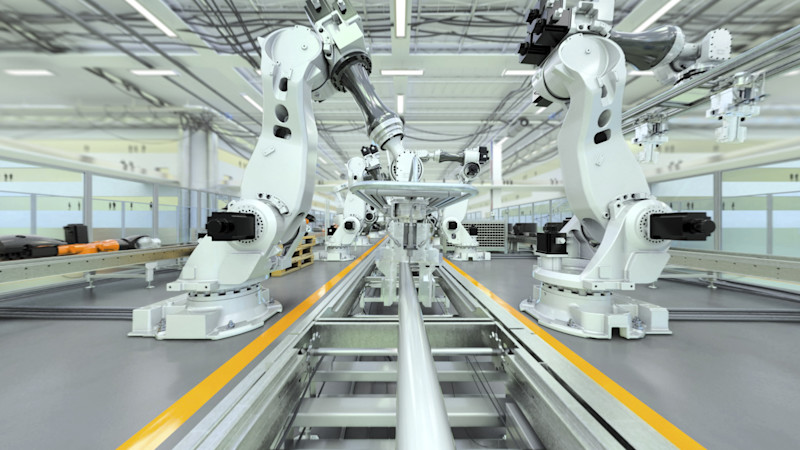The Evolution of Automation Technology
Automation technology used in industry has evolved from conveyor belts used since the late 19th century to move coal, ore, and other raw materials, to automated material handling (AMH) systems that provide multiple types of movement and functionality, to industrial robots – robotic arms – introduced in the mid-20th century, which continue to grow in use throughout the manufacturing industry as prices come down and advanced end of arm tooling (EOAT) and sensors expand their functionality and intelligence. Automated guided vehicles (AGV) are a fourth category of automation introduced in the mid-20th century that we will discuss in a separate article.
Conveyors
Conveyor systems are standard equipment in manufacturing for a variety of operations: pick-and-place, dispensing, assembling, palletizing, and moving products or materials that are too heavy to lift. There are dozens of types of conveyors with names suggesting their purpose: gravity, elevated, accumulation, bucket, chain, spiral, and vertical, to name only a few. Two of the most widely used conveyors are roller conveyors, used for heavy loads where less precision is required, and belt conveyors, which are best for pick-and-place movements that require precisely locating smaller or irregularly shaped objects.
Automated Material Handling
Automated material handling (AMH) is a broader category of automation in which automated systems are used for dispensing, machine loading, material handling, order picking, packaging, and many other applications. AMH systems are faster, more agile, and more precise than human workers. They are also less prone to accidents resulting from improper handling. Advances in sensing, machine learning (ML), artificial intelligence (AI), and radio frequency identification (RFID) technologies are today making it possible to fully automate an increasing number of handling tasks.
Robotic Arms
Arguably the most exciting category of automation in manufacturing is robotic arms. The term “robot” comes from the Czech word “robota,” generally translated as "forced labor." Robotic arms have been used for welding operations in automobile manufacturing for more than 50 years, and this industry is still the largest user of robots. A little less than a third of all robots are found in the automotive industry. Today, the range of tasks that robotic arms perform has expanded greatly as their flexibility continues to increase through technology advancements. In addition to lifting heavy items, they are also increasingly used for microsurgery to help surgeons perform very delicate operations with a high degree of precision.
A typical industrial robot arm includes a series of joints, articulations, and manipulators that work together to closely resemble the motion and functionality of a human arm. The arm’s job moves the end effector from place to place – picking up, putting down, taking off, or welding a part. A computer controls the robot by rotating individual step motors connected to each joint; some larger arms used to lift heavy payloads use hydraulics or pneumatics. A robotic arm can be programmed to do several different jobs or one specific job, depending on the manufacturer’s needs.
Robotic arms can perform a wide range of tasks depending on the tools that are attached to the end of the arm, and recent technology advances have greatly expanded the variety of end-of-arm tooling that is available. Additionally, a variety of sensors can be attached to robotic arms to communicate detailed data and information about the robot’s working environment to its control center to guide its movements and activity.
In our next article in this series, we’ll take a deep dive into advancements in end of arm tooling and sensors for robotic arms.






